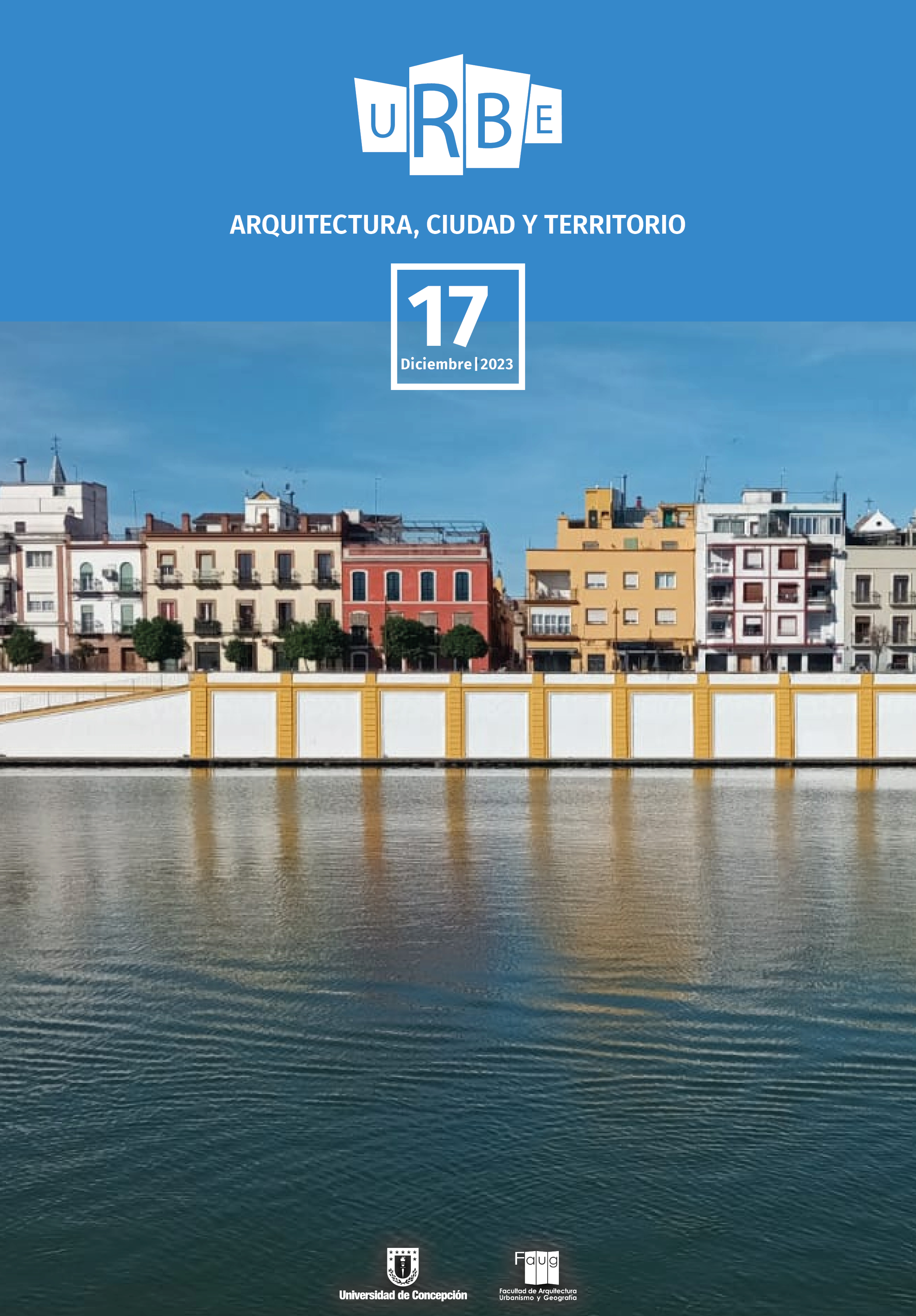Analysis of the importance of loneliness in the spatiality and setting of the work of Luis Barragán
DOI:
https://doi.org/10.29393/UR17-3AICM10003Keywords:
Solitude, Barragán, Sensory elements, InterviewsAbstract
Luis Barragán is one of the most important architects of the 20th century. His contributions represented a great revolution compared to the architecture of the modern movement and the current of functionalism. Barragán conceived an architecture based on sensory experiences, where great use was made of elements such as light and color; at the same time rescuing the traditional architecture of his country and combining it with the forms of modernism. This research seeks to analyze the influence that solitude had in relation to the design criteria in the work of Luis Barragán. This research will be done based on quotes from interviews carried out with the architect in which those variables of solitude present within his work will be found. From these quotes, the relationship between them is analyzed to provide a definition of what would be multiple design criteria related to solitude. These criteria can cover aspects ranging from vegetation, the composition of interior volumes and color. From this it is intended to have a clearer and more specific idea about those foundations that are present in Barragán's work, at the same time associating them with the virtues of a timeless space, whose relevance is maintained even beyond the use for which it was initially defined.
Downloads
References
Abellanas Paniagua, C. (2015). La plástica del color en la obra de Luis Barragán: una aproximación experimental. (Trabajo de grado, Universitat Politècnica de València). http://hdl.handle.net/10251/58633
Alva, E., García Cornejo, M., Palomar, J., Rodríguez, S., & Ruiz Barbarin, A. (Eds.). (1995). Barragán: obra completa. Tanais Ediciones.
Álvarez Checa, J., & Ramos Guerra, M. (1995). Luis Barragán, 1902-1988. Obra construida. Consejería de Obras Públicas y Transportes, Dirección General de Arquitectura y Vivienda. Recuperado de https://www.juntadeandalucia.es/sites/default/files/2021-12/60acb156000a9-luis_barragan.pdf
Ambasz, E. (1976). The Architecture of Luis Barragán. MOMA.
Barragán, L., & Riggen, A. (Ed.) (2000). Luis Barragán: Escritos y conversa-ciones. El Croquis.
Barragán, L. (2000). Discurso de aceptación del Premio Pritzker. Luis Barragán: escritos y conversaciones. El Croquis Editorial. Recu-perado de https://www.academia.edu/45176952/Discurso_de_aceptaci%C3% B3n_del_Premio_Pritzker_Luis_Barrag%C3%A1n
Clarke, T., & Costall, A. (2008). The emotional connotations of color: A qualitative investigation. Color Research & Application: Endorsed by Inter-Society Color Council, The Colour Group (Great Britain), Canadian Society for Color, Color Science Association of Japan, Dutch Society for the Study of Color, The Swedish Colour Centre Foundation, Colour Society of Australia, Centre Français de la Couleur, 33(5), 406-410.
Connolly, C. (1949). La tumba sin sosiego. Universidad Nacional de Mexico. https://www.academia.edu/44668968/La_tumba_sin_sosiego_Connolly_Cyril
Curiel Gámez, F. (2020). La visión del Arte Sacro Moderno de Pie Raymond Régamey y su contribución en la evolución de la obra arquitectónica de Luis Barragán: 1947-1980. ACE: Architecture, City and Environment, 14(42). https://doi.org/10.5821/ace.14.42.8285
Curiel Gámez, F. (2021). La crítica de Barragán hacia la publicidad de la vida moderna y su visión sobre la espiritualidad del arte encarnada en su obra arquitectónica: 1940-1980. ACE: Architecture, City and Environment, 16(47). https://doi.org/10.5821/ace.16.47.9501
Figueroa Castrejón, A. (2002). El arte de ver con inocencia: Pláticas con Luis Barragán (2.a ed.). Universidad Autónoma Metropolitana, Unidad Azcapotzalco, Rectoría, Coordinación de Extensión Universitaría. http://hdl.handle.net/11191/2453
Han, J., & Nam, J. (2015). The Representation of Ambiguity on the Spaces of Luis Barragán House and Studio. Journal of Asian Architecture and Building Engineering, 14(2), 287-291. https://doi.org/10.3130/jaabe.14.287
Hemphill, M. (1996). A note on adults' color–emotion associations. The Journal of genetic psychology, 157(3), 275-280.
Long, C. R., & Averill, J. R. (2003). Solitude: An exploration of benefits of being alone. Journal for the Theory of Social Behaviour, 33(1), 21-44.
Kaya, N., & Epps, H. H. (2004). Relationship between color and emotion: A study of college students. College student journal, 38(3), 396-405.
Ochoa, D. (2022). Los patios de Luis Barragán: el remedio para el mo-dernismo mexicano. Otros Diálogos, (21). https://www.proquest.com/docview/2780172887
Pallasmaa, J. (2021). Loneliness and Solitude in Architecture: Estrangement and Belonging in the Existential Experience. Loneliness and the Built Environment; Datutop Occasional Papers, 40. https://projects.tuni.fi/uploads/2021/06/7cca87af-lobe_pallasmaa.pdf
Park, H.J., & Kim, H. (2005). A Study on Characteristics of Architectural Space in Luis Barragan’s Houses. Proceedings of the Korean Institute of Interior Design Conference, 102-105. https://koreascience.kr/article/CFKO200522941430570.page
Real Academia Española. (s.f.) Soledad. En Diccionario de la lengua española, 23a. ed. [versión 23.7 en línea]. Revisado el 12 de mayo de 2024. https://dle.rae.es/soledad
Sanchez, L. (2020). Luis Barragán y la arquitectura emocional. [Trabajo de grado], Universitat Politècnica de València. http://hdl.handle.net/10251/179024
Serrano Andrés, M. del C. (2021). La arquitectura de Luis Barragán (1902-1988) [Trabajo de grado]. Universidad de Zaragoza. https://zaguan.unizar.es/record/108726
Published
How to Cite
Issue
Section
Copyright (c) 2023 Cristóbal Felipe Martínez Pérez

This work is licensed under a Creative Commons Attribution 4.0 International License.
Revista URBE. Arquitectura, Ciudad y Territorio tiene licencia de Creative Commons Attribution 4.0 International (CC BY 4.0) y debe citarse correctamente.









